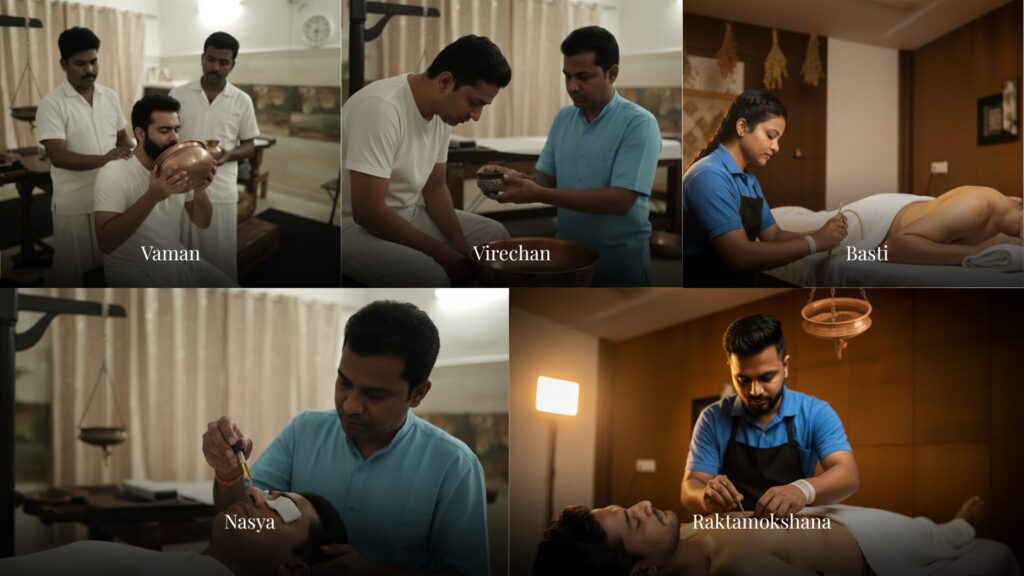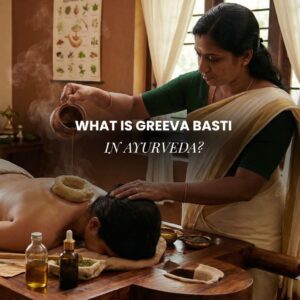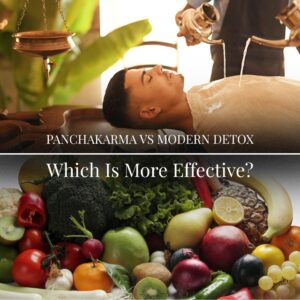Panchakarma therapy is more than an ancient detox ritual, it is a systematic, time-tested pathway to restore balance, reduce chronic inflammation, and boost immunity. In this article I explain how toxins accumulate, what the five Panchakarma therapies do, the step-by-step stages, and how these processes improve immunity.
How Do Toxins (Amas) Accumulate and Affect the Body
In Ayurveda, ama is the by-product of improper digestion and metabolic waste that has not been fully processed. Ama can be sticky and toxin-like that obstructs channels (srotas), disturbs cellular metabolism, low grade inflammation, and poor immunity.
Over time this leads to weakened Ojas (ayurvedic concept for vital immunity and vitality), fatigue, frequent infections, and slower recovery from illnesses.
As per modern research, similar mechanisms are linked to oxidative stress and inflammatory biomarkers, which are amas in ayurveda. That’s where Panchakarma came to rescue and helped health seekers with detoxification with reduced inflammatory markers.
The Five Panchakarma Therapies
Classical Panchakarma is a set of five procedures which are targeted to remove deeply accumulated toxins and restore homeostasis. They are as follows –
- Vamana (Therapeutic Emesis) – In this procedure of Panchakarma, kapha related toxins are eliminated through controlled vomiting.
- Virechana (Purgation Therapy) – Purgation to remove Pitta-related toxins from gut and liver.
- Basti (Medicated Enema) – It is a core therapy for Vata disorders that cleanses the lower gut and influences systemic immunity. Studies have shown that a course of Basti can modulate pro-inflammatory cytokines and immunoglobulin profiles.
- Nasya (Nasal Administration) – In this therapy, nasal oils are put in the nasal to clear head channels, improve sleep, and reduce neuro-inflammation.
- Raktamokshana (Blood-Letting) – Impure/morbid blood is cleaned from the affected through medicinal leeches.

Three Stages of Panchakarma Therapy: Step-By-Step
Panchakarma is delivered in three steps for safety and efficacy –
1. Purvakarma (Preparation): Includes a controlled diet, internal medicines, Abhynagam, swedana, which are preparatory measures to loosen toxins and mobilize them towards the gastrointestinal tract.
2. Pradhana Karma (Main Panchakarma Detox): This step is the actual five cleansing procedures (Vamana, Virechana, Basti, Nasya, and Raktamokshana) that are administered under clinical supervision. It is usually considered an intensive elimination phase.
3. Paschatkarma (Rejuvenation & Post Treatment): Rasayana, dietary rehabilitation, lifestyle guidance, and supportive therapies that restore digestion and rebuild Ojas. Hence, this phase in particular is crucial to enhance immunity.
How Panchakarma Strengthens Immunity (Immune Connection: Ojas and Ama)
Classical Panchakarma supports immunity through multiple mechanisms that bridge ayurvedic theory and measurable physiology.
- Reduction of Ama (Toxin Load): Eliminating ama reduces chronic inflammatory stimulus. Several pilot trials and reviews report improvements in inflammatory biomarkers after Panchakarma treatment.
- Modulation of Immune Markers: Therapies like Basti have been observed to change cytokine profiles and immunoglobulins, which indicate immunomodulation rather than simple suppression.
- Stress Reduction & Autonomic Balance: Preparatory and supportive therapies like Abhyanga, Yoga, Meditation) lower stress hormones and improve vagal tone, known to support immune resilience.
Observational studies of Panchakarma treatments improve in quality of life and psychosocial measures, indirectly boosting immunity.
- Metabolic and Oxidative Stress Benefits: Clinical reports show reductions in oxidative stress and improvements in metabolic inflammation known to impair immune function.
So, Panchakarma can rebuild Ojas and reduce the burden of ama in the body for a more resilient immune system.
When To Consider Panchakarma
Any health seeker who is going through the signs of the following indications must get their ayurvedic checkup done –
- Recurrent infections, low energy, poor sleep, chronic digestive complications.
- Autoimmune-type conditions or chronic inflammatory disorders, that are chosen as part of an integrative plan.
- As a preventive seasonal care to boost resilience (before, during, and after monsoon).
- However, always consult a qualified ayurvedic doctor to know if Panchakarma is appropriate or matches the health requirements.
Best Time to Do Panchakarma for Immunity
Classically, the ideal season to do Panchakarma for immunity is during the change of seasons, especially spring (Vasant Ritu), autumn (Sharad Ritu), and early winter (Hemant Ritu). Additionally, ayurveda recommends these periods for the following reasons –
1) During change of season the body is more prone to dosha imbalances and lowered immunity. Panchakarma helps restore equilibrium before ailments prolong.
2) In spring and autumn time, digestive fire is the strongest that makes detoxification and rejuvenation more effective.
3) After monsoon and after the heavy, cold months, Panchakarma clears accumulated ama and prepares the body for the upcoming season.
4) Seasonal Panchakarma prevents recurrence of chronic ailments like allergies, arthritis, skin issues, and digestive disorders that can flare up during climate changes.
5) This in-depth cleansing brings mental clarity, reduction in stress, and stabilization of mood during subtle shifts that nature is bound to bring.
Benefits of Panchakarma Beyond Immunity
Panchakarma’s effects reach beyond immune boosting, the health seeker experiences improved digestion and metabolic health, better sleep and mood, reduced chronic pain, clearer skin, weight regulation, and enhanced mental clarity.
- Pain Relief and Flexibility: Undergoing classical Panchakarma alleviates stubborn pain, arthritis, and musculoskeletal stiffness by reducing inflammatory ama.
- Clearer Skin and Anti-Ageing Effects: Removes toxins that cause skin issues, improves complexion, delays ageing signs.
- Healthy Weight Management: All the primary five Panchakarma therapies help in regulation of metabolism. Weight loss is linked to Kapha excess and weight to Vata weakness.
- Health seekers suffering from hormonal issues and health concerns can benefit with timely cycles, fertility, and endocrine health by balancing doshas.
How VVAC is the Best Panchakarma Therapy Near You
At Vaidyaratnam Vrindavan Ayurveda Chikitsalayam (VVAC), our well-experienced and skilled therapists combine classical Ashtavaidyan principles and modern care to deliver authentic panchakarma treatment in a peaceful setting.
- Integrated supportive care for our health seekers including personalised yoga, meditation, physiotherapy, and diet alteration.
- Organic in-house herbs and a sattvic food which is prescribed by the doctors while supporting healing.
- Classical treatments at VVAC are empaneled under CGHS, CAPF, Government of Haryana.





